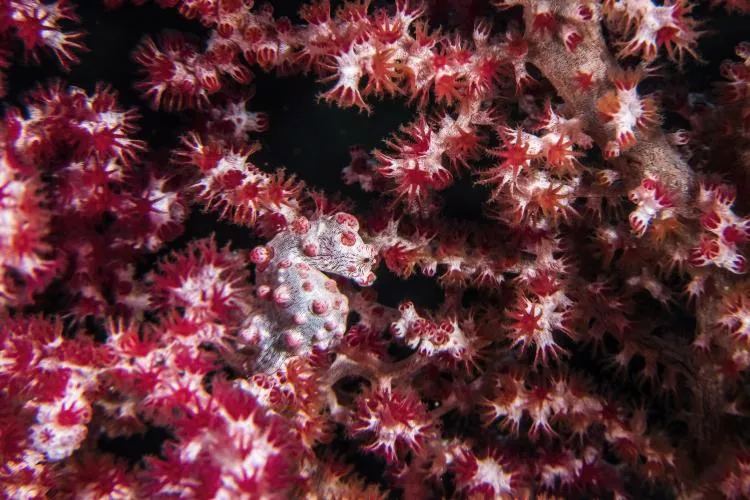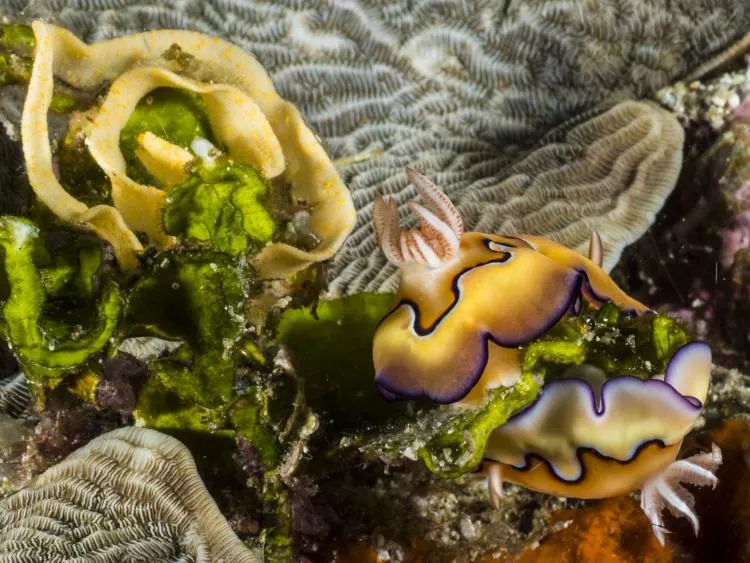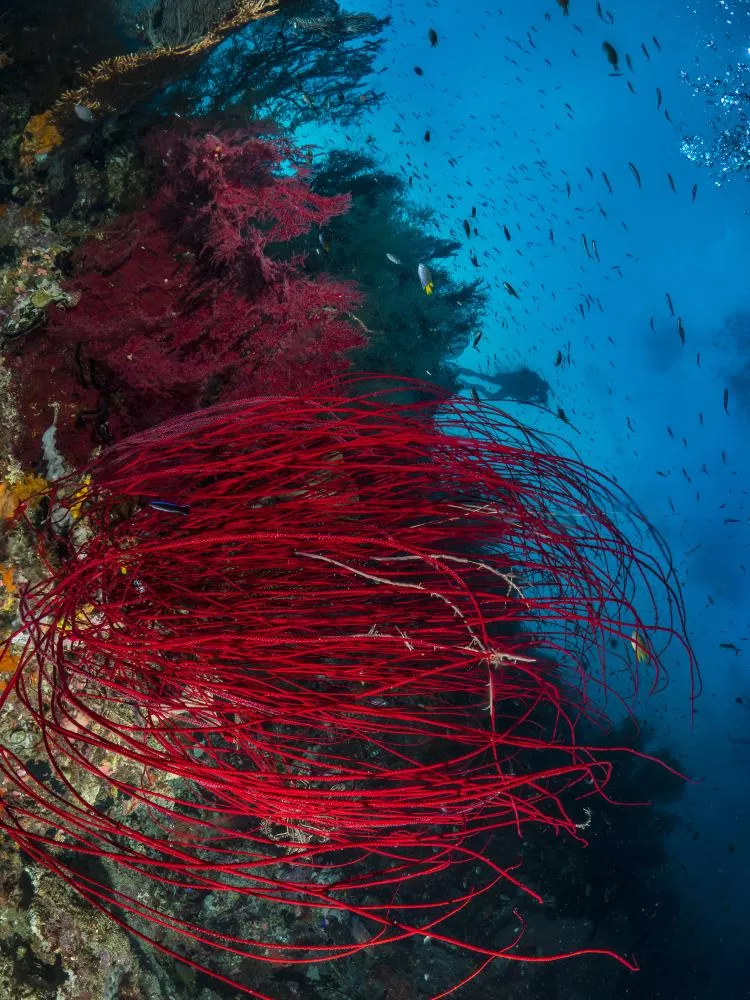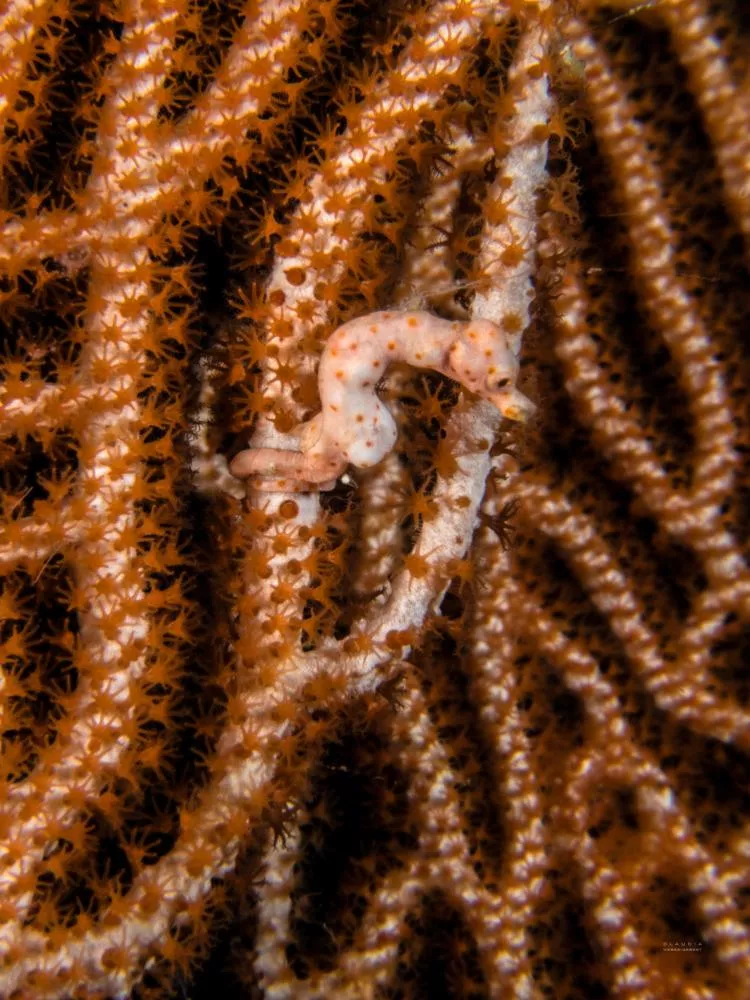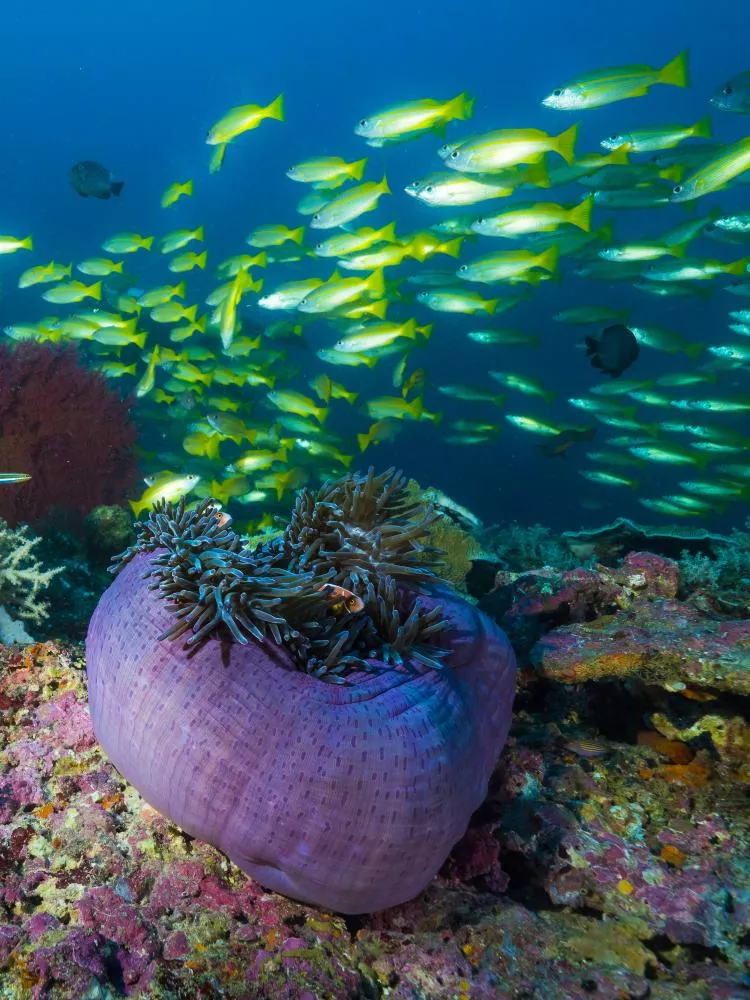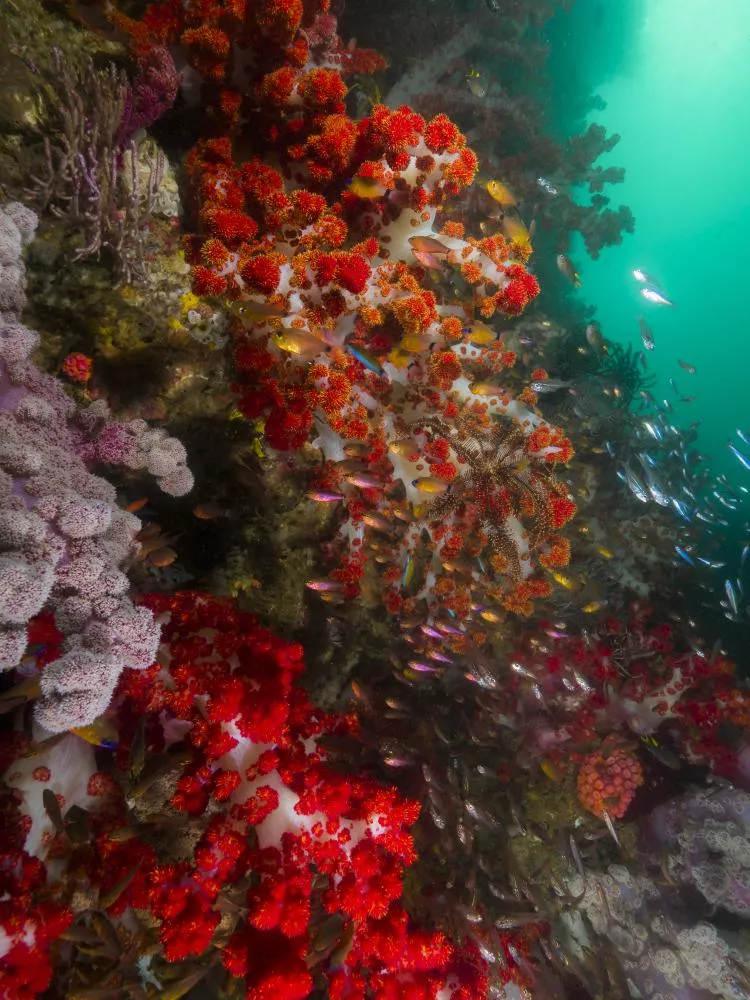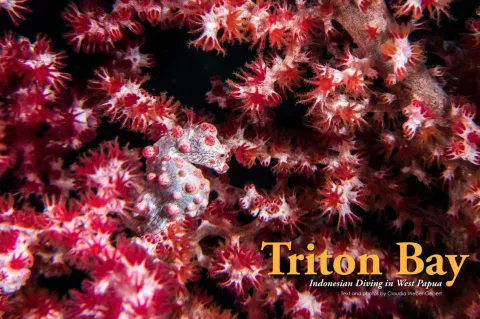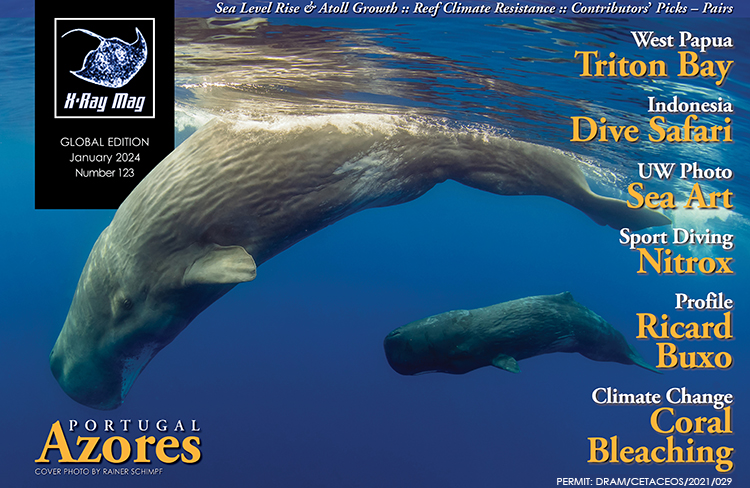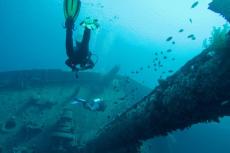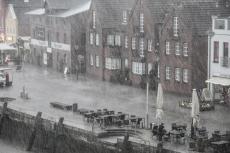Triton Bay. Untouched, remote, overwhelming... it is an under-water world that enchants. Claudia Weber-Gebert shares her liveaboard adventure there.
Contributed by
Raja Ampat is known and beloved by many divers. But a one-hour flight south from Sorong will take you to another gem in Kaimana—Triton Bay. My liveaboard adventure began here. However, the diving area in Triton Bay, south of Raja Ampat, was only explored in more detail just a few years ago. Only a handful of liveaboard boats go to these dive sites, and there is currently only one resort. Apart from a few local small fishing villages, there is no civilisation to speak of.
Old traces of civilisation can be seen here in the form of prehistoric wall paintings, dating back over 10,000 years. Our captain skilfully steered the Gaia Love liveaboard close to the spots where petroglyphs could be found, so that the guests could photograph these special works of art.
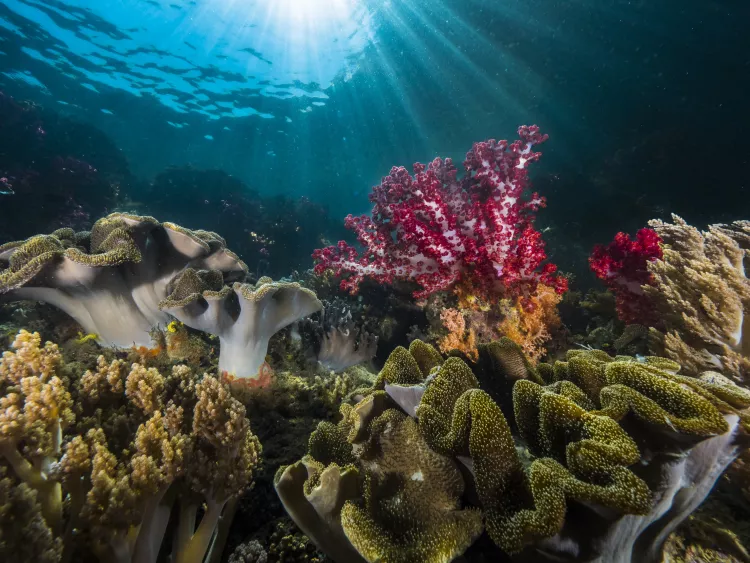
Rich biodiversity
On the coast of West Papua, an upwelling current brings nutrient-rich water to the surface. The resulting abundance of fish and biodiversity is indescribable. There are so many fish that you can no longer see the reef.
Enormously large and colourful soft corals are the hallmarks of these dive sites, even at a depth of just 5m. But beautiful hard corals can also be found, completely intact, as well as densely populated reefs, which can rarely be found elsewhere. There are large table corals under which various fish hide, barrel sponges standing like huge planters between the corals, and coral gardens with large colonies of black corals. The sight is overwhelming.
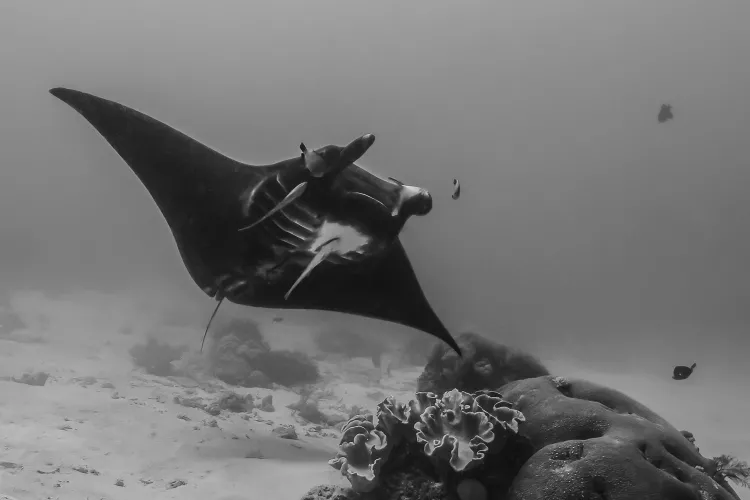
Diving
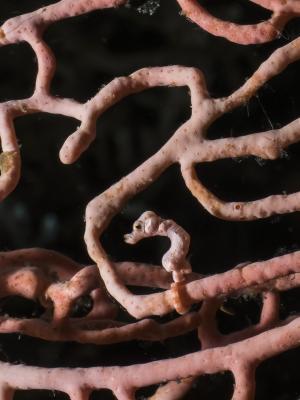
Although the water was slightly greenish, visibility was good. Underwater photographers would definitely consider this place an El Dorado, for both macro and wide-angle shots. The underwater landscapes were breathtakingly beautiful and varied, colourful and full of life. Dive sites like Little Komodo were reminiscent of the underwater world of Komodo; and just around the corner, the underwater scene looked like Palau—so everything was very interesting to see. Where the currents passed the steep walls, one could see large sea fans, up to 3m high, in all colours and variations.
The most sought-after photo subjects were pygmy seahorses, and one could find them even at a depth of just 15m. Usually, these small seahorses can only be found at 25 to 30m.
Schools of fish moved through the water like endless ribbons; there were silversides, snappers, fusiliers, bumphead parrotfish, batfish and barracudas. Manta rays and mobula rays also circled above cleaning stations. And, of course, small macro subjects could also be found everywhere, including many different colourful nudibranchs, crabs or ghost pipefish, and blue-ringed octopus or wonderpus.
Underwater life was raging everywhere. Silversides formed tight schools, “flying” in formation and moving along in an artful way to escape their predators. The fish were so densely packed that they blocked the sunlight.
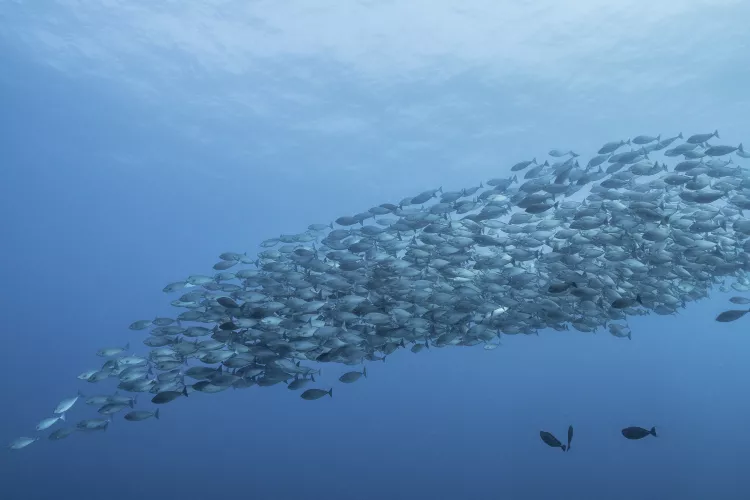
The spectacle continued above the surface of the water where predators such as dolphins and sailfish jumped out of the water to hunt for smaller fish. This action could even be observed from the boat.
In this case, all one can really say is that pictures speak louder than words! Indeed, this legendary underwater world can hardly be described in words.
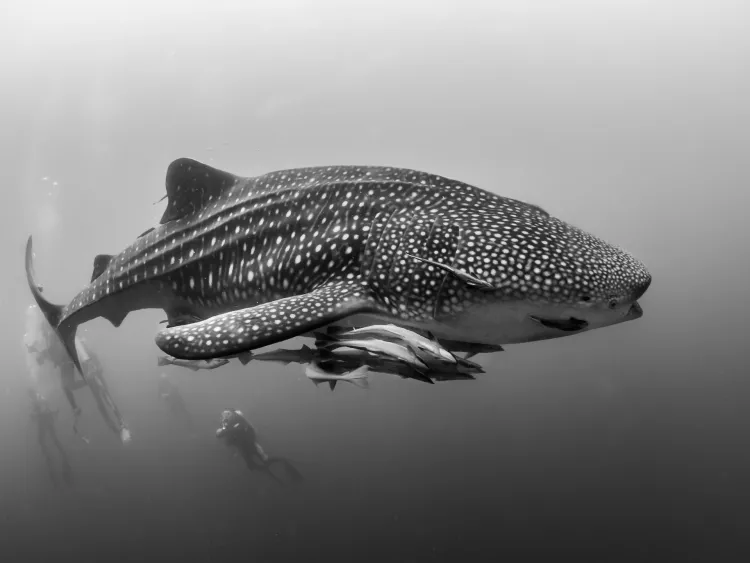
And then, there was a very special highlight. Whale sharks would gather at a bagang (lift net) where local fishermen captured small baitfish. The whale sharks got there on their own. They would be fed fish, but only when liveaboards were at the site, which occurred one to two times per week. So, the liveaboards stayed in the local area and offered the fishermen an additional source of income, namely through permissions from the village elder to allow divers to dive under the bagang for a fee. There was a high probability of encountering whale sharks here—sometimes up to five at a time, from smaller juveniles to huge giants.
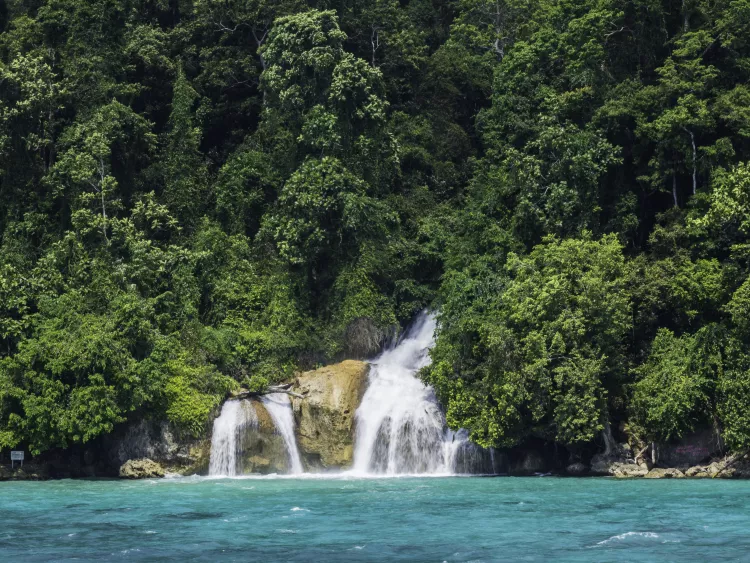
Scenic islands
It was not just the underwater landscapes that were exciting, but also the many small floating islands and rocks that protruded out of the water everywhere, covered with lush vegetation. Birds had brought seeds from the mainland to these limestone rocks, giving rise to the rich vegetation. Undercut by the water’s edge, these rocks seemed to float above the sea at low tide, just like the famous rocks in the James Bond movies, filmed in Thailand or Palau.
And, of course, the coastal landscape of Papua also had the same beautiful charms. Colourful birds could be seen in the trees. Frigate birds and other seabirds circled over the sea, and at night, moths and butterflies came to the ship, attracted by the light. They were the prey of the bats which fluttered around the liveaboard at night. Ospreys could also be seen in the distance, but they were shy and did not come close.
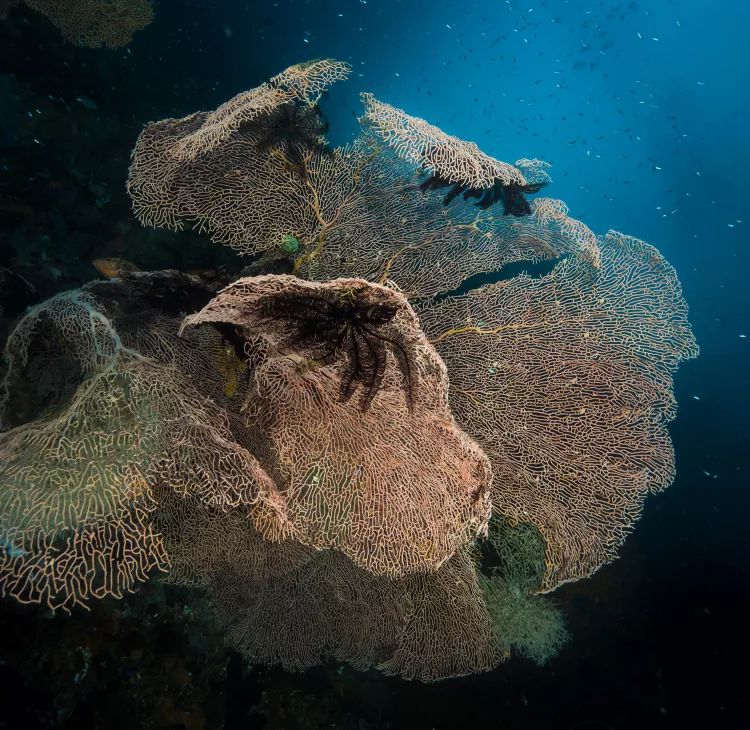
The route is the goal
Even in this day and age, if divers want to visit remote places, some may have to travel long distances. From Singapore or Jakarta, one can get to Sorong in West Papua, and from there, to Kaimana. Some liveaboard tours start and end in Sorong, depending on the duration and route, but most of the time, the tour starts in Kaimana.
It is recommended to make a stopover in Singapore or Jakarta. Otherwise, the journey will be extremely long. A stopover helps with acclimatisation, so you will arrive at your destination rested and can enjoy your time on the liveaboard. Domestic flights from Singapore or Jakarta are operated by the Indonesian airlines Batik Air, Lion Air and Garuda Air.
The long journey is rewarded with the spectacular landscape, both above and below water. The running joke on our tour in Triton Bay was: It’s not the end of the world—but you can see it from here!
In Triton Bay, we only encountered one other liveaboard boat during the seven days of our tour. This meant that one had all the dive sites to oneself. No pack diving, no mass tourism. And it seemed that this area had so far been spared from the problems of modern civilisation. There was no plastic to be seen anywhere in the water.
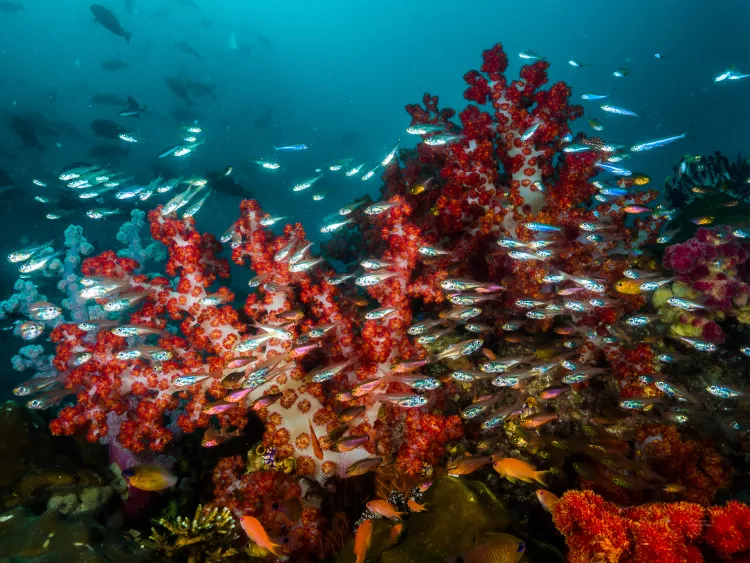
Apparently, nothing is transported there by the currents. Or everything is kept away from the area by the upward current. So far, there is no further information about it. But it is a very pleasing sight and nice to know that there are still places on our planet that are not polluted, at least not obviously.
With gentle tourism and boats that focus on sustainability, it will hopefully stay that way.
A paradise like this shows what our oceans and reefs once looked like everywhere: intact and densely populated reefs, with an abundance of fish, high biodiversity, clean waters and functioning ecosystems. It is a model for what other dive destinations should strive to become again. This can only happen if everyone does their part, by supporting sustainable fishing practices worldwide, avoiding plastic waste, choosing travel destinations carefully and supporting those who are thinking about it. ■

